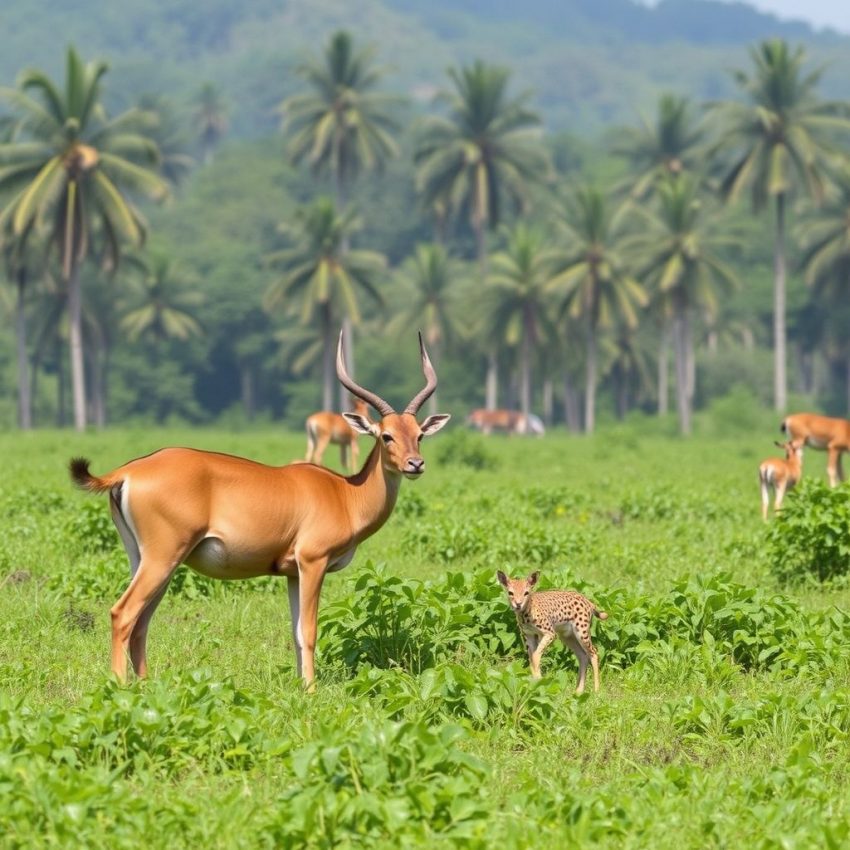Monkey Business: Sri Lanka's Wildlife Census Sparks Debate Over Crop Damage
Sri Lanka, a biodiversity hotspot, is embarking on a nationwide wildlife census, counting everything from its iconic elephants to the more mischievous monkeys, giant squirrels, and flamboyant peacocks. While crucial for conservation efforts, the census has also reignited a simmering debate between farmers and wildlife authorities over the increasing problem of crop damage.
The island nation, known for its rich flora and fauna, faces a complex challenge: balancing the needs of its wildlife with the livelihoods of its farmers. As human settlements encroach on wildlife habitats, interactions between humans and animals are becoming increasingly frequent, often with detrimental consequences for both.
The census, aiming to provide accurate population figures for various species, is vital for developing effective conservation strategies. It will shed light on population trends, distribution patterns, and potential threats faced by these animals, including habitat loss, poaching, and human-wildlife conflict.
However, for many farmers, the census is a reminder of the daily struggles they face due to crop raiding by monkeys, giant squirrels, and peacocks. These animals, often driven by dwindling natural food sources, venture into farms and plantations, devouring fruits, vegetables, and grains, causing significant economic losses.
"It's a constant battle," laments one farmer from the central hills. "The monkeys are clever and persistent. We try scarecrows, noisemakers, even guarding our fields day and night, but they always find a way in. We lose a significant portion of our harvest every year."
The issue is particularly acute for small-scale farmers, who often rely on their crops for their sole income. The damage inflicted by wildlife can push them further into poverty and food insecurity.
Farmers are calling for more effective solutions from the government, including:
- Compensation schemes: Financial assistance to offset losses incurred due to crop damage.
- Improved wildlife management strategies: Relocation of problem animals, creation of buffer zones, and exploration of alternative food sources for wildlife.
- Community-based conservation programs: Involving local communities in wildlife management and promoting co-existence between humans and animals.
While acknowledging the plight of farmers, wildlife authorities emphasize the importance of conservation. They argue that these animals play a vital role in the ecosystem and contribute to Sri Lanka's biodiversity. They are also exploring sustainable solutions, such as promoting eco-tourism and developing wildlife-friendly farming practices.
The wildlife census, therefore, is not just about counting animals. It's about understanding the complex dynamics between humans and wildlife and finding ways to ensure their co-existence. It's a conversation that needs to involve all stakeholders – farmers, conservationists, policymakers, and local communities – to find a balanced and sustainable solution. The challenge lies in finding a way to protect both Sri Lanka's precious wildlife and the livelihoods of its people. Only then can the island nation truly thrive.
Don’t miss out on this exclusive deal, specially curated for our readers! Vegan Diet: Unlock the Key Benefits of Embracing a Plant-Based Lifestyle
This page includes affiliate links. If you make a qualifying purchase through these links, I may earn a commission at no extra cost to you. For more details, please refer to the disclaimer page. disclaimer page.

